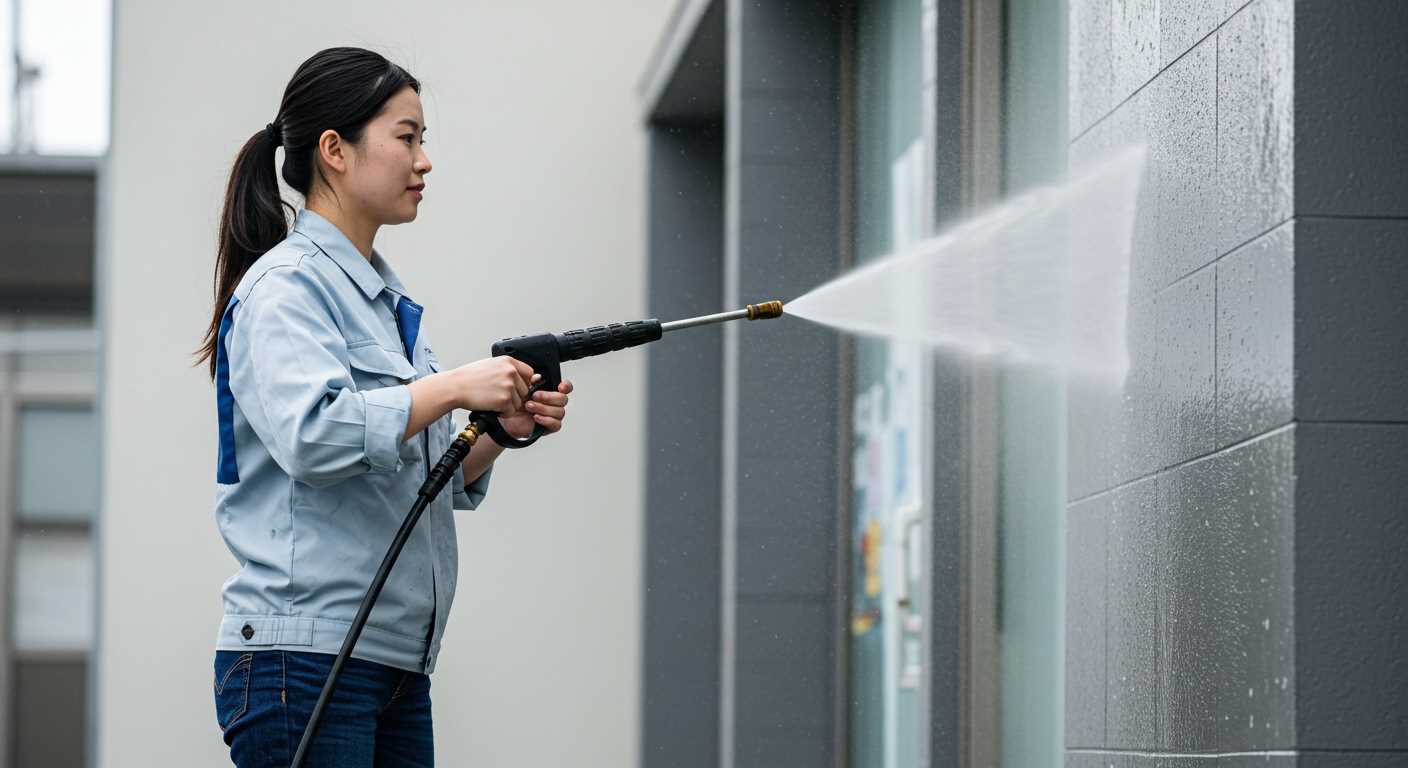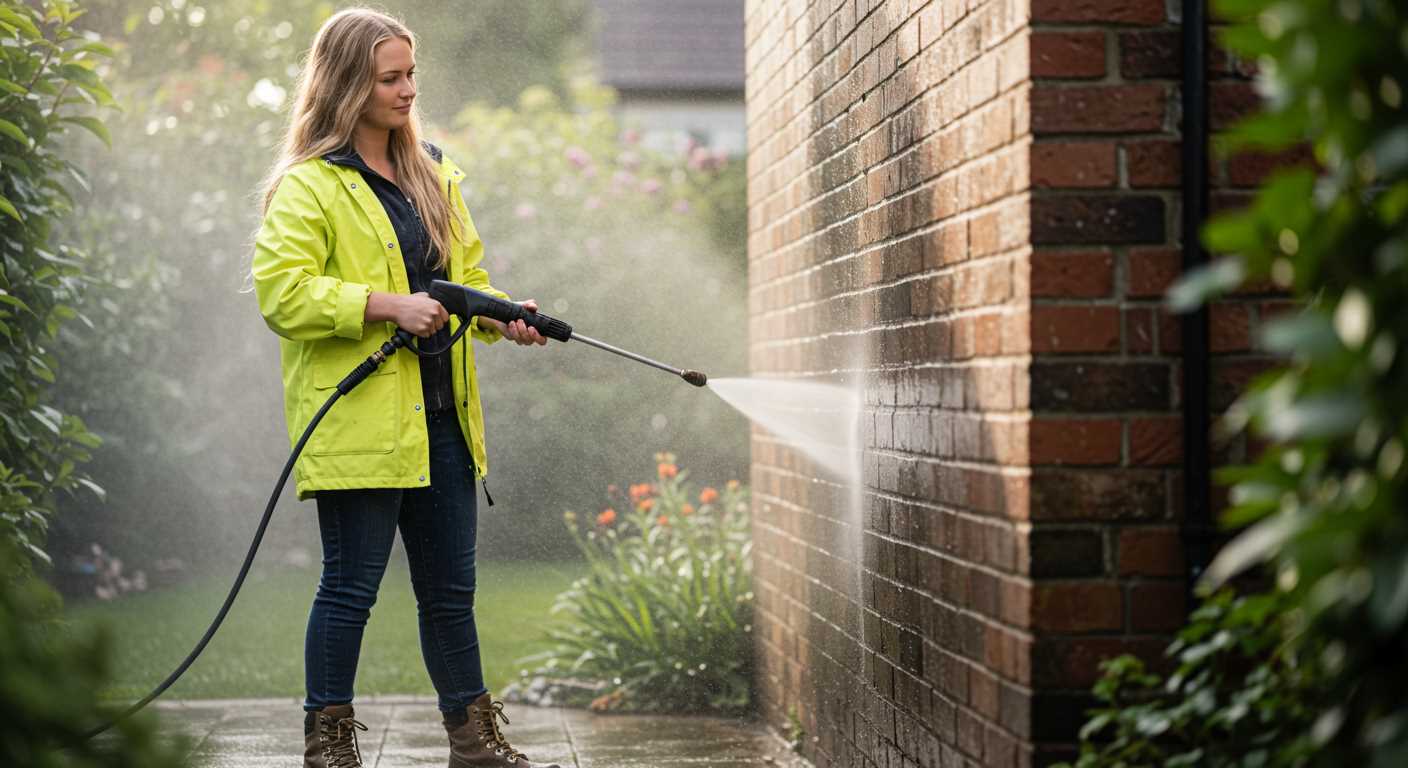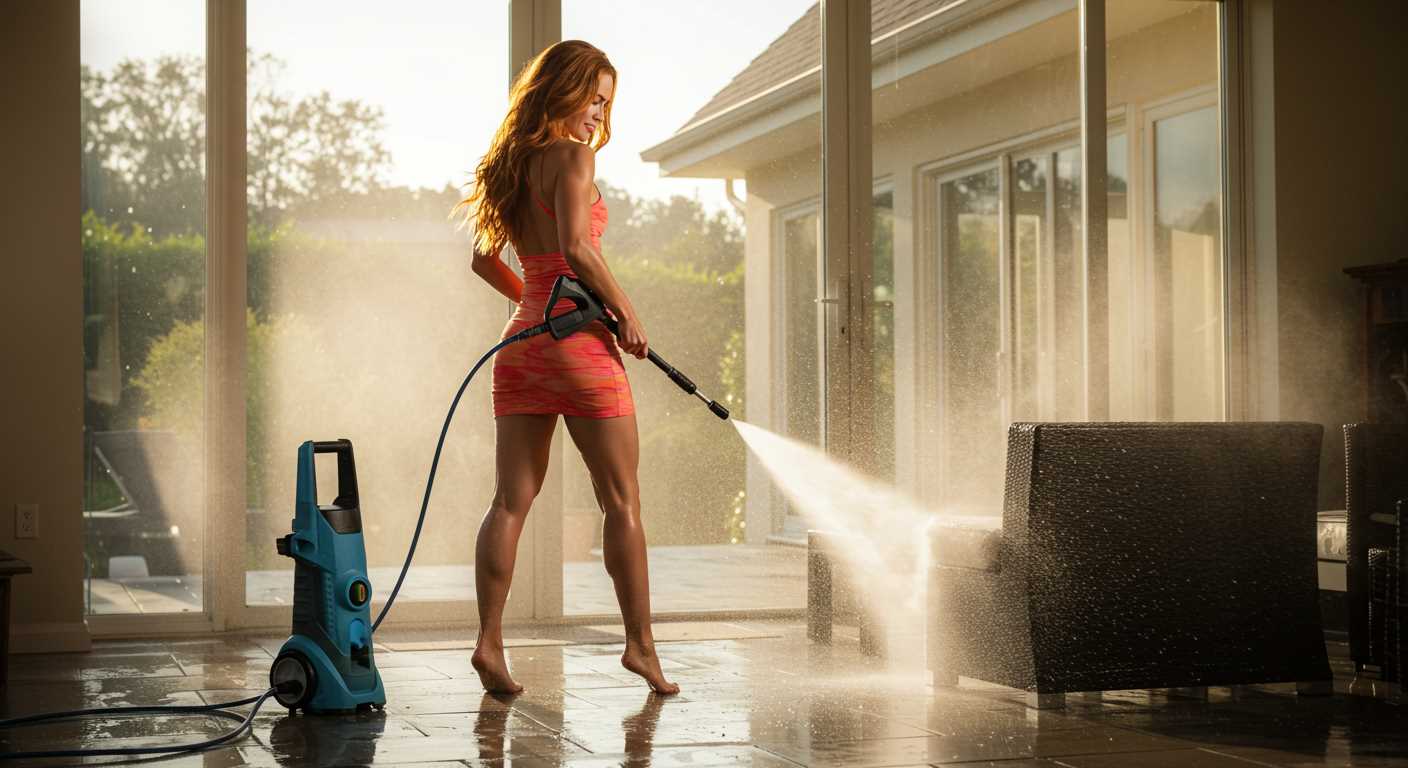



A proper nozzle adjustment can considerably enhance the water flow rate. Opt for a nozzle with a wider angle, such as a 25-degree or 40-degree attachment, to increase the volume of water distributed over a larger surface area.
Another effective method involves ensuring that your hose is free from kinks or blockages. A straight and unobstructed hose allows maximum flow, allowing you to achieve optimal performance during your cleaning sessions.
Regular maintenance of the machine also plays a significant role. Clean or replace the water filter if it’s clogged, as this can lead to reduced water flow. Check the inlet valves and seals for damage; replacing worn-out parts can restore functionality and improve output.
Using hot water, if your unit supports it, can enhance its performance. Hotter water can remove grime more effectively, thus reducing the demand on water flow for the same level of cleanliness.
Lastly, consider upgrading to a higher-capacity pump if the performance remains unsatisfactory. A pump with a higher rating is designed to deliver greater water flow, resulting in quicker cleaning and improved efficiency.
Optimize Water Flow Rate
To enhance the water output of your cleaning unit, consider replacing the existing nozzle with one that offers a wider orifice. A larger nozzle allows increased flow without elevating pressure. This adjustment is particularly beneficial when tackling larger surfaces, as it decreases cleaning time significantly.
Upgrade the Hose

Switching to a high-flow hose can also boost your unit’s performance. Look for hoses that offer a wider diameter, ideally 5/8 inch or 3/4 inch. Ensure the hose is flexible yet durable, as rigid hoses can restrict flow. Additionally, confirm that the hose fittings are leak-free to maintain optimal water supply.
Check Water Supply
Monitoring the source of water is vital. Ensure you are using a source with adequate pressure and flow rate to match your equipment’s requirements. If possible, install a dedicated water line to prevent disruptions caused by other household appliances drawing from the same supply. Clean any filters that may have accumulated debris to maintain unobstructed flow.
Choosing the Right Nozzle for Optimal Water Flow
Selecting the appropriate nozzle can significantly enhance water output from your cleaning unit. Each nozzle type influences the velocity and spread of water. It’s vital to choose a nozzle that matches the task and equipment specifications.
Types of Nozzles
Three primary types of nozzles are available, each serving distinct purposes:
| Nozzle Type | Application | Effect on Water Flow |
|---|---|---|
| 0-degree | Surface cleaning, stubborn stains | High pressure, narrow spray |
| 15-degree | Heavy-duty tasks | Moderate pressure, focused stream |
| 25-degree | General cleaning | Lower pressure, wider spray |
| 40-degree | Delicate surfaces | Gentle spray, minimal pressure |
Choosing Based on Requirements
For maximum output, select nozzles that allow higher flow rates according to your cleaning requirements. A wider angle nozzle lessens pressure but increases coverage, suitable for large areas. Conversely, narrower nozzles maintain pressure but limit coverage, ideal for stubborn grime. Always refer to the manufacturer’s guidelines for nozzle compatibility with your model.
Experiment with different options during your cleaning tasks to discover the most effective combinations. This systematic approach ensures you optimise performance and achieve impressive results efficiently.
Upgrading the Pressure Washer Pump for Higher GPM

Replacing the existing pump with a higher output model is a straightforward method to enhance water flow. Begin by identifying a compatible pump that matches your current unit’s specifications, including mounting configuration and drive type.
Selecting the Right Pump
Look for pumps designed specifically for high flow rates. Brands that specialise in heavy-duty equipment often provide pumps capable of delivering increased output without compromising performance. Important specifications to consider include PSI ratings and bore size. A pump with a larger bore can typically process more water, thus improving overall performance in a short time frame.
Installation Tips
When upgrading, ensure all connections are properly sealed to prevent leaks and maintain efficiency. Pay attention to the drive mechanism; compatibility with the motor is critical for optimal function. After installation, test the new pump’s operation to verify improvements. Always consult manufacturer guidelines to confirm that modifications do not void warranties or lead to safety issues.
Regular maintenance of the pump will also ensure longevity and sustained performance enhancements. Clean filters and check for wear on seals to maximise output and streamline usage.
Understanding the Impact of Hose Length and Diameter
The diameter of the hose plays a significant role in the flow rate of water. A wider hose allows more water to pass through, reducing resistance and enhancing delivery. Opt for hoses with a diameter of at least 3/8 inch for optimal performance. A 1/4 inch hose might work for light duties, but it limits the volume significantly.
Effects of Hose Length
A longer hose creates more friction, which can reduce water flow. It’s advisable to limit hose length to 50 feet if maximum performance is a goal. If longer lengths are necessary, choose a larger diameter to mitigate pressure loss. Using high-quality hoses designed to handle greater distances can also help maintain efficiency.
Material and Flexibility
Selecting the right material influences water flow as well. Reinforced rubber or high-grade PVC hoses are durable and maintain their shape under pressure, ensuring a steady stream. Additionally, flexible hoses facilitate easy handling and movement, making tasks quicker and less cumbersome. Always check for kinks or damages that might obstruct flow before starting any work.
Regular Maintenance to Maintain Pump Performance
Consistent upkeep is key to maximising the functionality of your washing equipment’s pump. Start with fluid checks; ensure the pump oil is at the recommended level and replace it as per the manufacturer’s guidelines to prevent wear and tear. Using clean, high-quality detergents will also help to keep the system running smoothly.
Inspect the inlet filter regularly. A clogged filter restricts water flow, leading to diminished cleaning performance. Clean or replace it as necessary to facilitate unrestricted access to water.
Monitor the condition of the seals and O-rings. These components can degrade over time, potentially causing leaks that hinder effectiveness. Regularly lubricate and replace damaged parts to ensure a tight seal.
Flush the pump with clean water after each use to remove debris and contaminants. This practice helps to prevent build-up that could compromise performance over time.
Lastly, check the drive system periodically. Ensure the belts are tight and the motor operates without unusual noise. Regular inspections can avert more significant issues later on.
Adjusting the Water Supply for Maximum Flow Rate
Optimising the water supply is key to achieving superior flow. A direct line from the source enhances performance significantly. Here are specific actions you can implement:
- Ensure the inlet supply is free from restrictions. Check for kinks or blockages in hoses that could impede water movement.
- Use a larger diameter hose. This reduces resistance and allows for a quicker flow of water to the machine.
- Install a dedicated supply line. For best results, set up a hose exclusively for your unit, avoiding shared lines that may limit water delivery.
Monitor the flow rate from your tap. If it’s below a certain threshold, performance will lag. A standard recommendation is at least 5-7 litres per minute from the source for optimal operation.
Consider the type of connection used. A quick-connect fitting may create turbulence; opting for a smoother connector can enhance water delivery efficiency.
- Utilise a pressure regulator when necessary. It can maintain consistent water flow, especially in fluctuating pressure scenarios.
- Check municipal water restrictions. In some areas, flow might be limited during peak usage times–adjust your working hours accordingly.
Finally, regular inspection of your water source is essential. A clean supply ensures the longevity and reliability of your equipment while maintaining ideal performance levels.
Utilising Attachments to Enhance Water Delivery

Utilising the right attachments significantly boosts the output of your cleaning equipment. Here are some recommendations for effective use:
Optimal Attachments to Integrate
.jpg)
- Surface Cleaners: These attachments cover a larger area quickly, providing uniform distribution of sprayed water.
- Gun Extensions: Allow for better reach and control, reducing the need for repositioning while maintaining a strong flow.
- Turbo Nozzles: They combine high pressure with a rotating spray pattern, creating a powerful stream that cleans effectively.
- Foam Cannons: Ideal for pre-soaking surfaces with detergent, enhancing the cleaning process by loosening grime.
Choosing Attachments Wisely
Selecting compatible accessories is crucial. Ensure that attachments match your unit’s specifications for optimal performance. Always refer to the manufacturer’s recommendations for guidance. An incompatible tool may limit flow and compromise cleaning effectiveness, negating any potential gains in output.
Experimenting with different combinations can yield impressive results. For instance, pairing a foam cannon with a turbo nozzle can create a synergy that cleans deeply while maintaining high water delivery rates. This approach not only enhances efficiency but also reduces overall cleaning time.









